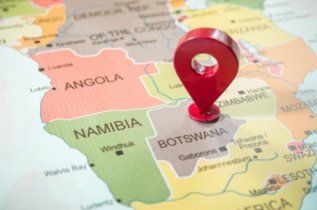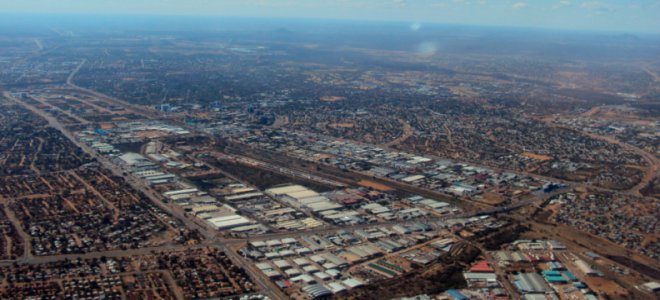|
Once the location had been identified, work on the earth core fill Gaborone Dam began in 1963 securing a water source for the planned capital and building of the city itself started in earnest in 1964 being largely completed within two years in time to celebrate the birth of the new nation on 30th September 1966 when the town was renamed Gaborone and declared the capital. Today Gaborone, with its population of around 246,325, boasts an international airport, stadium, large shopping malls and hotels together with government, industrial and financial hubs. It also serves as a gateway to rural Africa. It achieved city status in 1986.
 Gaborone is a vibrant and diverse city that is home to people from various ethnic backgrounds, including the Tswana, Kalanga, and Basarwa tribes. The city's social life revolves around its numerous shopping malls, restaurants, and entertainment venues, which offer a wide range of activities for residents and visitors. Gaborone is a vibrant and diverse city that is home to people from various ethnic backgrounds, including the Tswana, Kalanga, and Basarwa tribes. The city's social life revolves around its numerous shopping malls, restaurants, and entertainment venues, which offer a wide range of activities for residents and visitors.
The city's economic profile is primarily driven by the service sector, with government, finance, and tourism being the main pillars. Gaborone is also home to several international organizations, including the Southern African Development Community (SADC) and the United Nations, which contribute to the city's economic growth.
Gaborone is a relatively safe city with a low crime rate, making it an ideal place to live and work. The city's infrastructure is well-developed, with modern roads, reliable public transportation, and affordable housing options. Education is highly valued in Gaborone, with several primary and secondary schools, as well as the University of Botswana, which is the country's leading tertiary institution. The city's healthcare system is also well-developed, with several private and public hospitals and clinics providing quality medical services. In terms of recreation, Gaborone offers a variety of sports facilities, parks, and cultural attractions, including the National Museum and Art Gallery, which showcases the rich history and culture of Botswana.
Gaborone is an increasingly popular destination for tourists, offering a range of attractions that cater to various interests. Some of the must-visit tourist attractions in Gaborone include:
The Three Dikgosi Monument: This monument commemorates the three chiefs who played a crucial role in the independence of Botswana. The monument features life-size bronze statues of Kgosi Sebele I, Kgosi Bathoen I, and Kgosi Khama III, and is located in the heart of the city.
Gaborone Game Reserve:This nature reserve is home to a variety of wildlife, including zebras, impalas, and warthogs. The reserve also offers guided walks, game drives, and picnic areas for visitors to enjoy.
Kgale Hill:This iconic hill, located on the western edge of the city, offers panoramic views of Gaborone and its surroundings. The hill is a popular spot for hiking, jogging, and birdwatching.
Mokolodi Nature Reserve: This privately-owned reserve is located just a short drive from the city center and offers a variety of activities, including game drives, guided walks, and a reptile park. The reserve is home to several endangered species, including white rhinos and cheetahs.
|






 Gaborone is a vibrant and diverse city that is home to people from various ethnic backgrounds, including the Tswana, Kalanga, and Basarwa tribes. The city's social life revolves around its numerous shopping malls, restaurants, and entertainment venues, which offer a wide range of activities for residents and visitors.
Gaborone is a vibrant and diverse city that is home to people from various ethnic backgrounds, including the Tswana, Kalanga, and Basarwa tribes. The city's social life revolves around its numerous shopping malls, restaurants, and entertainment venues, which offer a wide range of activities for residents and visitors.


